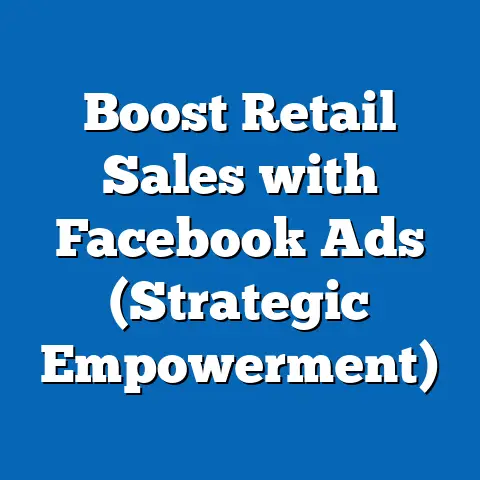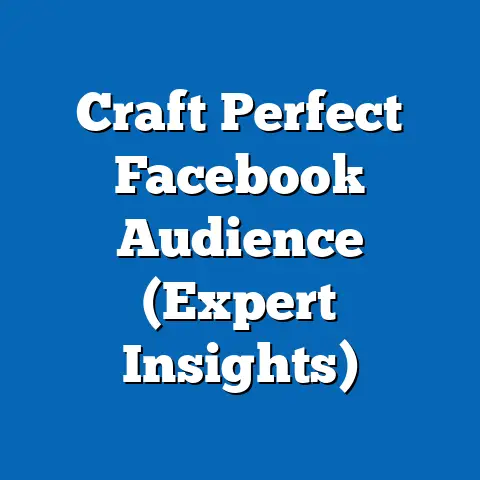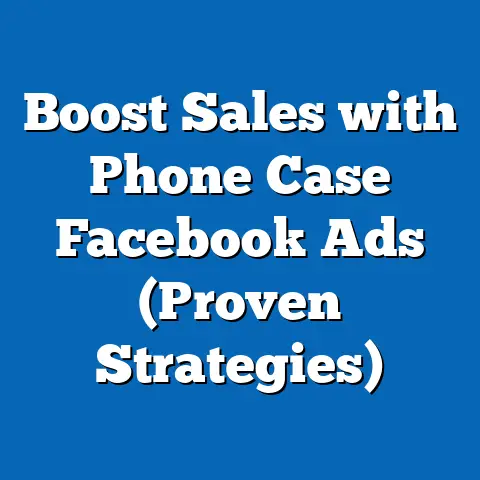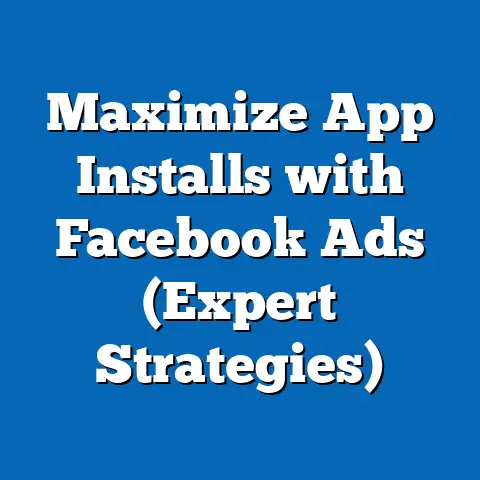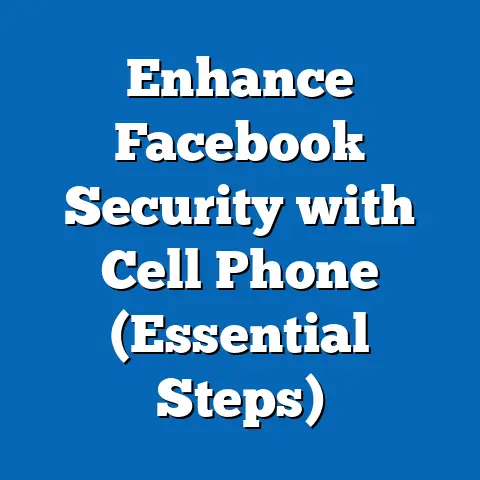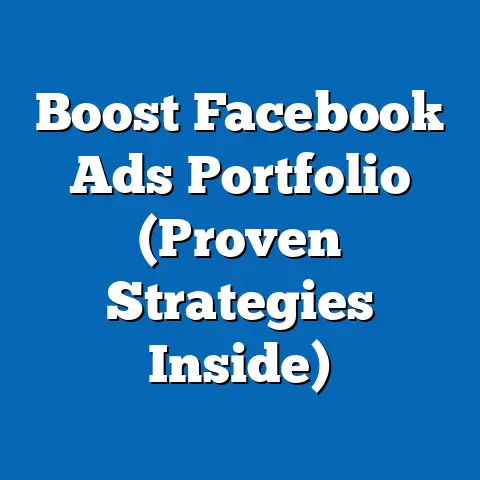AdWords vs Facebook Ads 2025: (Ultimate Showdown)
As the calendar flips to January 2025, a fresh wave of ambition sweeps through the business world. Companies are dusting off their strategic plans, scrutinizing last year’s performance, and meticulously charting a course for the year ahead. In this flurry of activity, one decision looms large for marketers: Where to allocate their advertising budget?
The digital advertising landscape is a dynamic arena, and two titans have consistently dominated the conversation: Google AdWords (now known as Google Ads) and Facebook Ads. These platforms have shaped the way businesses connect with their audiences, drive traffic, and ultimately, generate revenue. But as we step into 2025, the question remains: Which platform reigns supreme? Which will give you the best bang for your buck in the ever-evolving world of digital marketing?
This isn’t just a theoretical debate. It’s a decision that can significantly impact your bottom line. I’ve seen firsthand how choosing the right platform can catapult a business to success, and conversely, how misdirected investment can lead to wasted resources and missed opportunities. In my years of experience, I’ve learned that there’s no one-size-fits-all answer. The “best” platform depends entirely on your specific goals, target audience, and the unique characteristics of your business.
- Targeting Capabilities: Can you reach the right audience with precision?
- Ad Formats and Creative Opportunities: Which platform offers the most engaging and effective ad formats?
- Cost Efficiency and ROI: Where can you get the best return on your investment?
- Emerging Trends and Future Outlook: What’s on the horizon for each platform, and how can you prepare for the future?
My goal is to arm you with the knowledge you need to make informed decisions about your advertising strategy in 2025. So, buckle up, and let’s dive into the ultimate showdown between Google Ads and Facebook Ads!
Section 1: Overview of Google Ads and Facebook Ads
To truly understand the battle between Google Ads and Facebook Ads, we need to take a step back and examine their individual journeys. Both platforms have evolved significantly over the years, adapting to the ever-changing needs of advertisers and the evolving behaviors of consumers.
A Historical Look at Google Ads
Google Ads, initially launched as Google AdWords, has been a cornerstone of digital advertising since its inception in 2000. I remember when it first came out – it felt revolutionary. The ability to target specific keywords and appear at the top of search results was a game-changer for businesses looking to reach customers actively searching for their products or services.
Over the years, Google Ads has evolved from a simple keyword-based advertising platform to a sophisticated ecosystem encompassing a wide range of ad formats and targeting options. Some key milestones include:
- The Introduction of Quality Score: This metric, introduced in the mid-2000s, incentivized advertisers to create high-quality ads and landing pages, leading to better user experiences and more efficient campaigns.
- The Expansion into Display Advertising: The launch of the Google Display Network (GDN) allowed advertisers to extend their reach beyond search results, targeting users across a vast network of websites and apps.
- The Rise of Video Advertising: YouTube, acquired by Google in 2006, became a powerful platform for video advertising, offering advertisers the opportunity to engage with audiences through compelling visual content.
- The Integration of Machine Learning: In recent years, Google has increasingly incorporated machine learning into its advertising platform, automating tasks such as bidding and targeting to improve campaign performance.
Today, Google Ads remains a powerful tool for businesses of all sizes. Its key features include:
- Search Ads: Text-based ads that appear on Google search results pages.
- Display Ads: Visual ads that appear on websites and apps within the Google Display Network.
- Video Ads: Ads that run on YouTube and other video platforms.
- Shopping Ads: Product listings that appear on Google search results pages and shopping websites.
- App Ads: Ads designed to promote mobile apps.
A Look at Facebook Ads
Facebook Ads, on the other hand, emerged as a force to be reckoned with in the social media era. Launched in 2007, Facebook Ads capitalized on the platform’s massive user base and rich data to offer advertisers unparalleled targeting capabilities.
I recall being initially skeptical. Could social media really be a serious advertising platform? But Facebook quickly proved its mettle, demonstrating its ability to connect businesses with highly specific audience segments based on demographics, interests, and behaviors.
Facebook Ads’ growth trajectory has been marked by several key developments:
- The Introduction of Detailed Targeting Options: Facebook’s ability to target users based on granular data points, such as interests, hobbies, and life events, revolutionized the way advertisers reached their audiences.
- The Rise of Mobile Advertising: As mobile usage exploded, Facebook Ads adapted to the mobile-first world, offering ad formats optimized for mobile devices.
- The Expansion into Video Advertising: Facebook’s video platform became a major competitor to YouTube, offering advertisers a new avenue for engaging with audiences through video content.
- The Focus on User Engagement: Facebook Ads emphasizes user engagement, encouraging advertisers to create ads that are not only informative but also entertaining and shareable.
Today, Facebook Ads offers a diverse range of ad formats, including:
- Image Ads: Simple ads featuring a single image and text.
- Video Ads: Ads featuring short videos.
- Carousel Ads: Ads featuring multiple images or videos that users can swipe through.
- Collection Ads: Ads that showcase a collection of products.
- Lead Ads: Ads designed to generate leads directly within Facebook.
- Instant Experience Ads: Full-screen, mobile-optimized ads that provide an immersive user experience.
Comparing User Interfaces and Ease of Use
While both platforms are powerful, their user interfaces and ease of use differ significantly. Google Ads, with its long history and extensive feature set, can be overwhelming for beginners. I remember feeling lost when I first started using it – there were so many options and settings!
Facebook Ads Manager, on the other hand, is generally considered to be more user-friendly, particularly for those familiar with the Facebook platform. However, even Facebook Ads Manager can be complex, especially when dealing with advanced targeting options and campaign optimization strategies.
In my experience, small businesses often find Facebook Ads easier to get started with, while larger corporations with dedicated marketing teams may prefer the more granular control offered by Google Ads. Ultimately, the best platform depends on your individual skill set and the resources you have available.
Key Takeaway: Both Google Ads and Facebook Ads have a rich history and offer a wide range of features for advertisers. Google Ads is known for its search-based advertising and extensive network, while Facebook Ads excels at targeting specific audience segments and driving user engagement. The best platform for you depends on your individual needs and resources.
Next Steps: Consider your current skill set and the resources you have available. If you’re a beginner, Facebook Ads might be a good place to start. If you have a dedicated marketing team and are comfortable with complex platforms, Google Ads might be a better fit.
Section 2: Targeting Capabilities
The ability to target the right audience is paramount to the success of any advertising campaign. Both Google Ads and Facebook Ads offer sophisticated targeting options, but they approach the problem from different angles.
Advanced Targeting Options in Google Ads
Google Ads leverages its vast database of search queries and user behavior to offer a range of powerful targeting options. These include:
- Keyword Targeting: This is the cornerstone of Google Ads. You can target specific keywords that users are searching for, ensuring that your ads appear when they’re actively looking for your products or services. I’ve found that carefully selecting the right keywords is crucial for driving relevant traffic to your website. Using broad match, phrase match, and exact match keywords strategically can make a huge difference.
- Geographic Targeting: You can target users based on their location, from broad regions to specific zip codes. This is particularly useful for businesses with a local presence. I once helped a local bakery increase its foot traffic by targeting users within a 5-mile radius of its store.
- Audience Segmentation through Google Analytics: By linking your Google Analytics account to your Google Ads account, you can create custom audiences based on user behavior on your website. For example, you can target users who have visited specific pages, spent a certain amount of time on your site, or completed a specific action.
- Demographic Targeting: You can target users based on age, gender, income, and other demographic factors. This can be useful for reaching specific segments of the population.
- Remarketing: You can target users who have previously interacted with your website or ads. This is a powerful way to re-engage potential customers who have shown interest in your products or services.
Facebook Ads’ Targeting Prowess
Facebook Ads, on the other hand, leverages its vast database of user profiles and social interactions to offer unparalleled targeting capabilities. These include:
- Demographic Targeting: Similar to Google Ads, you can target users based on age, gender, education, and other demographic factors. However, Facebook’s demographic data is often more detailed and accurate than Google’s.
- Interest-Based Targeting: This is where Facebook Ads truly shines. You can target users based on their interests, hobbies, and the pages they’ve liked on Facebook. I’ve seen incredible results using interest-based targeting. For example, I helped a fitness company target users who were interested in specific types of workouts, such as yoga or CrossFit.
- Custom Audiences: You can upload your own customer data (e.g., email addresses, phone numbers) to create custom audiences. This is a powerful way to target your existing customers or prospects on Facebook.
- Lookalike Audiences: This is one of Facebook Ads’ most powerful features. You can create lookalike audiences based on your existing customers or website visitors. Facebook will then find users who are similar to your existing audience, allowing you to reach new potential customers who are likely to be interested in your products or services.
I remember working with a client who sold high-end baby products. We used Facebook Ads to create a lookalike audience based on their existing customers, and the results were phenomenal. We were able to reach a new audience of affluent parents who were highly likely to purchase their products.
Comparing Effectiveness in Reaching Specific Audience Segments
So, which platform is more effective at reaching specific audience segments? The answer, as always, depends on your specific goals and target audience.
- Google Ads is generally more effective for reaching users who are actively searching for your products or services. If you’re selling a product that people are actively looking for, Google Ads is a great way to reach them.
- Facebook Ads is generally more effective for reaching users who are not actively searching for your products or services but may be interested in them based on their demographics, interests, or behaviors. If you’re selling a product that people may not know they need, Facebook Ads is a great way to introduce it to them.
According to a 2024 study by Statista, Facebook remains the most used social media platform worldwide, with over 3 billion monthly active users. This vast user base gives advertisers unparalleled reach and targeting capabilities. However, the same study also found that Google Ads tends to deliver a higher conversion rate than Facebook Ads for certain types of businesses. This is likely due to the fact that Google Ads reaches users who are actively searching for specific products or services, while Facebook Ads reaches users who may not be actively looking to buy.
Key Takeaway: Both Google Ads and Facebook Ads offer powerful targeting options, but they approach the problem from different angles. Google Ads is best for reaching users who are actively searching for your products or services, while Facebook Ads is best for reaching users who may be interested in your products or services based on their demographics, interests, or behaviors.
Next Steps: Consider your target audience and their online behavior. Are they actively searching for your products or services? Or are they more likely to discover them through social media? This will help you determine which platform is best for reaching them.
Section 3: Ad Formats and Creative Opportunities
Beyond targeting, the ad formats and creative opportunities offered by each platform play a crucial role in capturing audience attention and driving results. The right ad format, combined with compelling creative, can make all the difference.
Exploring Ad Formats on Google Ads
Google Ads offers a variety of ad formats designed to cater to different advertising goals. These include:
- Search Ads: These are the classic text-based ads that appear on Google search results pages. They’re simple but effective, allowing you to quickly convey your message to users who are actively searching for your products or services. The key to success with search ads is crafting compelling ad copy that includes relevant keywords and a clear call to action.
- Display Ads: These visual ads appear on websites and apps within the Google Display Network. They offer a more engaging way to reach your audience, allowing you to showcase your products or services with images and videos. The Google Display Network is vast, reaching over 90% of internet users worldwide.
- Video Ads: These ads run on YouTube and other video platforms. They’re a powerful way to engage with audiences through compelling visual content. Video ads can be used to tell your brand story, showcase your products or services, or simply entertain your audience.
- Shopping Ads: These product listings appear on Google search results pages and shopping websites. They’re ideal for e-commerce businesses looking to showcase their products and drive sales. Shopping ads include an image of the product, its price, and the name of the retailer.
- App Ads: These ads are designed to promote mobile apps. They can appear on Google search results pages, the Google Display Network, and YouTube. App ads are a great way to drive downloads and increase user engagement with your app.
Diving into Facebook Ads’ Diverse Range
Facebook Ads offers a similarly diverse range of ad formats, designed to leverage social engagement and capture audience attention. These include:
- Image Ads: Simple ads featuring a single image and text. These are a great way to quickly grab attention and convey your message. The key to success with image ads is using high-quality images that are visually appealing and relevant to your target audience.
- Video Ads: Ads featuring short videos. These are a powerful way to engage with your audience and tell your brand story. Video ads can be used to showcase your products or services, share testimonials, or simply entertain your audience.
- Carousel Ads: Ads featuring multiple images or videos that users can swipe through. These are a great way to showcase a range of products or services or tell a more complex story. Carousel ads are particularly effective for e-commerce businesses looking to showcase their product catalog.
- Collection Ads: Ads that showcase a collection of products. These are similar to carousel ads but offer a more immersive shopping experience. Collection ads are ideal for e-commerce businesses looking to drive sales directly from Facebook.
- Lead Ads: Ads designed to generate leads directly within Facebook. These are a great way to collect contact information from potential customers without sending them to your website. Lead ads are particularly effective for businesses looking to generate leads for their sales team.
- Instant Experience Ads: Full-screen, mobile-optimized ads that provide an immersive user experience. These are a great way to engage with your audience and tell your brand story in a visually compelling way. Instant Experience ads are particularly effective for businesses looking to create a memorable brand experience.
Comparing Effectiveness of Visuals and Messaging
The effectiveness of visuals and messaging on both platforms depends on a variety of factors, including your target audience, your advertising goals, and the specific ad format you’re using.
- Google Ads tends to be more focused on delivering relevant information to users who are actively searching for specific products or services. This means that your ad copy should be clear, concise, and informative. Visuals are less important on Google Ads, although they can still be effective in certain formats, such as display ads and video ads.
- Facebook Ads tends to be more focused on capturing audience attention and driving engagement. This means that your visuals should be eye-catching and your messaging should be engaging and shareable. Visuals are particularly important on Facebook Ads, as they play a key role in grabbing attention in the crowded social media landscape.
I remember seeing a campaign for a new brand of coffee that perfectly illustrated this difference. On Google Ads, their search ads focused on keywords like “best coffee beans” and “organic coffee,” highlighting the quality and sourcing of their product. On Facebook Ads, they ran visually stunning video ads showcasing the coffee-making process and the cozy atmosphere of a coffee shop, focusing on the emotional connection and experience of drinking their coffee. Both campaigns were successful, but they approached the audience from different angles, playing to the strengths of each platform.
However, it’s crucial to remember that creativity is key on both platforms. A bland, uninspired ad, no matter how well-targeted, is unlikely to deliver results. You need to think outside the box and create ads that are not only informative but also engaging and memorable.
Key Takeaway: Both Google Ads and Facebook Ads offer a variety of ad formats designed to cater to different advertising goals. Google Ads tends to be more focused on delivering relevant information, while Facebook Ads tends to be more focused on capturing audience attention and driving engagement. The key to success on both platforms is creating compelling creative that resonates with your target audience.
Next Steps: Experiment with different ad formats and creative approaches to see what works best for your business. Pay attention to your metrics and make adjustments as needed. Don’t be afraid to try new things and push the boundaries of your creativity.
Section 4: Cost Efficiency and ROI
Ultimately, the success of any advertising campaign comes down to cost efficiency and ROI. You need to know that you’re getting the best possible return on your investment.
Analyzing Cost Structures of Google Ads
Google Ads operates on a pay-per-click (PPC) model, meaning that you only pay when someone clicks on your ad. The cost per click (CPC) can vary widely depending on a number of factors, including:
- Keyword Competition: The more competitive the keyword, the higher the CPC. I’ve seen CPCs range from a few cents to over $100 for highly competitive keywords.
- Quality Score: Your Quality Score is a metric that measures the quality and relevance of your ads and landing pages. A higher Quality Score can lead to lower CPCs and better ad positions.
- Bidding Strategies: Google Ads offers a variety of bidding strategies, allowing you to optimize your campaigns for different goals. These include manual bidding, automated bidding, and smart bidding.
- Industry: Some industries are more competitive than others, leading to higher CPCs.
The competitive nature of bidding wars can have a significant impact on your advertising costs. If you’re bidding on highly competitive keywords, you may need to increase your bids to ensure that your ads are seen by your target audience.
However, it’s important to remember that higher bids don’t always guarantee better results. You need to focus on creating high-quality ads and landing pages that are relevant to your target audience. This will not only improve your Quality Score but also increase your conversion rate, ultimately leading to a better ROI.
Insight into Facebook Ads’ Pricing Models
Facebook Ads also operates on a pay-per-click (PPC) model, but it also offers other pricing models, including:
- Cost-Per-Impression (CPM): You pay for every 1,000 impressions your ad receives. This is a good option for businesses looking to increase brand awareness.
- Cost-Per-Action (CPA): You pay when someone takes a specific action, such as liking your page, sharing your ad, or filling out a lead form. This is a good option for businesses looking to generate leads or drive conversions.
The cost of Facebook Ads can vary depending on a number of factors, including:
- Target Audience: The more specific your target audience, the higher the cost.
- Ad Placement: Ads placed in more prominent positions, such as the Facebook News Feed, tend to be more expensive.
- Ad Quality: Facebook rewards high-quality ads with lower costs.
- Bidding Strategies: Similar to Google Ads, Facebook Ads offers a variety of bidding strategies, allowing you to optimize your campaigns for different goals.
To optimize your budgets for better returns, you need to carefully monitor your metrics and make adjustments as needed. This includes:
- Tracking Your Conversion Rate: This is the percentage of users who take a desired action, such as making a purchase or filling out a lead form.
- Monitoring Your Cost-Per-Acquisition (CPA): This is the cost of acquiring a new customer.
- Analyzing Your ROI: This is the return on your investment.
By tracking these metrics, you can identify areas where you can improve your campaigns and increase your ROI.
Comparing Average ROI from Both Platforms
So, which platform tends to deliver better results for specific industries or ad objectives? According to a 2024 study by HubSpot, Google Ads tends to deliver a higher ROI than Facebook Ads for businesses in the B2B space. This is likely due to the fact that Google Ads reaches users who are actively searching for solutions to their business problems.
However, the same study also found that Facebook Ads tends to deliver a higher ROI than Google Ads for businesses in the B2C space. This is likely due to the fact that Facebook Ads reaches a wider audience and offers more engaging ad formats.
In my experience, the best platform for you depends on your specific business goals and target audience. If you’re looking to generate leads or drive sales, Google Ads may be a better option. If you’re looking to increase brand awareness or drive engagement, Facebook Ads may be a better option.
I once worked with a local restaurant that was struggling to attract new customers. We ran both Google Ads and Facebook Ads campaigns, and the results were surprising. The Google Ads campaign generated a steady stream of customers who were actively searching for restaurants in the area. However, the Facebook Ads campaign generated a much larger number of customers who had never heard of the restaurant before. The Facebook Ads campaign was particularly effective at driving engagement and creating a buzz around the restaurant.
Key Takeaway: Both Google Ads and Facebook Ads offer different pricing models and can deliver different ROIs depending on your business goals and target audience. Google Ads tends to be more effective for B2B businesses looking to generate leads or drive sales, while Facebook Ads tends to be more effective for B2C businesses looking to increase brand awareness or drive engagement.
Next Steps: Carefully consider your business goals and target audience when choosing between Google Ads and Facebook Ads. Track your metrics and make adjustments as needed to optimize your campaigns and increase your ROI. Don’t be afraid to experiment with different pricing models and bidding strategies to see what works best for your business.
Section 5: Emerging Trends and Future Outlook
The digital advertising landscape is constantly evolving, and it’s important to stay ahead of the curve. Let’s take a look at some emerging trends and what the future holds for Google Ads and Facebook Ads.
Increasing Importance of AI and Machine Learning
One of the biggest trends in digital advertising is the increasing importance of AI and machine learning. Both Google Ads and Facebook Ads are increasingly leveraging AI and machine learning to automate tasks, improve targeting, and optimize campaigns.
I’ve seen firsthand how AI and machine learning can improve campaign performance. For example, Google Ads’ Smart Bidding feature uses machine learning to automatically adjust your bids based on real-time data, helping you to maximize your ROI. Similarly, Facebook Ads’ Automated Ads feature uses AI to automatically create and optimize your ads, saving you time and effort.
In the future, I expect AI and machine learning to play an even bigger role in digital advertising. We’ll likely see more sophisticated targeting options, more personalized ad experiences, and more automated campaign optimization tools.
Potential Impact of Privacy Regulations
Another major trend is the increasing focus on privacy regulations. Recent regulations, such as the General Data Protection Regulation (GDPR) and the California Consumer Privacy Act (CCPA), have given consumers more control over their data and have limited the ability of advertisers to track user behavior.
These regulations have had a significant impact on digital advertising. Advertisers need to be more transparent about how they collect and use user data, and they need to obtain consent from users before tracking their behavior.
In the future, I expect privacy regulations to become even stricter. Advertisers will need to find new ways to target their audiences without relying on personal data. This may involve using contextual targeting, which targets users based on the content they’re viewing, or using aggregated data, which combines data from multiple sources to create anonymized audience segments.
Speculating on Future Developments
So, what else can we expect from Google Ads and Facebook Ads in the future? Here are a few speculations:
- More Immersive Ad Experiences: I expect both platforms to invest in more immersive ad experiences, such as augmented reality (AR) ads and virtual reality (VR) ads. These ad formats offer a more engaging and interactive way to connect with your audience.
- Increased Focus on Video Advertising: Video advertising is already a major trend, and I expect it to become even more important in the future. Both Google Ads and Facebook Ads will likely continue to invest in video ad formats and targeting options.
- Greater Emphasis on Personalization: Consumers are increasingly demanding personalized ad experiences. I expect both platforms to offer more sophisticated personalization tools, allowing advertisers to create ads that are tailored to the individual user.
- Evolving Targeting Capabilities: As privacy regulations become stricter, advertisers will need to find new ways to target their audiences. This may involve using contextual targeting, aggregated data, or other innovative targeting methods.
Key Takeaway: The digital advertising landscape is constantly evolving, and it’s important to stay ahead of the curve. Emerging trends, such as the increasing importance of AI and machine learning and the increasing focus on privacy regulations, will have a significant impact on Google Ads and Facebook Ads.
Next Steps: Stay informed about the latest trends and developments in digital advertising. Experiment with new ad formats and targeting options. And be prepared to adapt your strategies as the landscape evolves.
Conclusion
So, as we stand at the dawn of 2025, the ultimate showdown between Google Ads and Facebook Ads continues. Both platforms have their strengths and weaknesses, and the best choice for your business depends on your specific goals, target audience, and resources.
Google Ads remains a powerful tool for reaching users who are actively searching for your products or services. Its extensive network and sophisticated targeting options make it a great choice for businesses looking to generate leads or drive sales.
Facebook Ads, on the other hand, excels at reaching users who may be interested in your products or services based on their demographics, interests, or behaviors. Its engaging ad formats and vast user base make it a great choice for businesses looking to increase brand awareness or drive engagement.
Ultimately, the key to success on both platforms is creating compelling creative that resonates with your target audience, carefully monitoring your metrics, and adapting your strategies as the landscape evolves.
I encourage you to consider your specific business needs, target audience, and marketing objectives when choosing between Google Ads and Facebook Ads. Don’t be afraid to experiment with both platforms and see what works best for you.
Now, I’d love to hear from you! What are your thoughts on the ongoing rivalry between Google Ads and Facebook Ads? Which platform has delivered the best results for your business? Share your thoughts and experiences in the comments section below! Let’s learn from each other and help each other succeed in the ever-evolving world of digital advertising.

